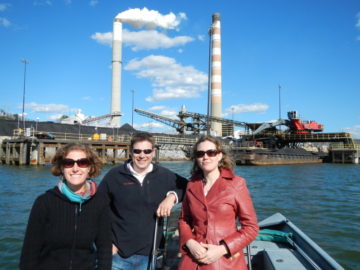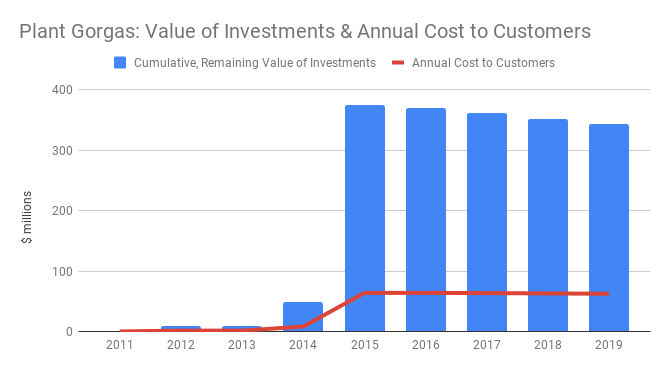This blog was written by John D. Wilson, former Deputy Director for Regulatory Policy at the Southern Alliance for Clean Energy.
Guest Blog | March 4, 2019 | Alabama, Coal
Alabama Power’s announcement that it will fully retire the Plant Gorgas coal plant is welcome news, but it comes five years too late for Alabama Power customers. Yesterday, AL.com wrote about the $500 still owed by the average Alabama Power customer to pay off Plant Gorgas.
In this blog, I’ll dig in a bit deeper.
In 2014, Alabama Power retired two units at Plant Gorgas, but decided to spend $329 million in capital upgrade investments at three other units at the plant to control toxic pollutants that were harming public health. The 2014 spending was part of a decade in which over $425 million was spent on the now-to-be-retired coal plant.
At the time, environmental and customer advocates decried the expense.
Analyst David Schlissel wrote, “Alabama Power’s Plant Gorgas Units 8, 9, and 10 (at which a scrubber was added in 2008 and a baghouse will be installed by 2016) have operated at only an average of 40 percent capacity factor since January 1, 2011 …”
Reporter Dan Zegart opined that, “Alabama Power remains a last bastion of enforced ignorance, making decisions that seem to make little long-term sense for the environment or its customers…”
Yet the Alabama Public Service Commission did not question the expense.
Alabama Public Service Commission Review of Plant Gorgas Upgrade
Compared to other state regulators, the Alabama PSC operates with a very light touch. The annual rate adjustment docket includes many filings by Alabama Power which take effect automatically. Most of the actual orders issued by the Alabama PSC are its agreement to a proposed change in accounting methods or scope of costs included in the two accounting systems used to create customers’ rates.

In the case of the $329 million Plant Gorgas upgrade, in 2013 Alabama Power filed a budget for $312 million to be spent in 2014 and 2015 (p. 48). Actual expenditures were $329 million in 2014 (see p. 60) and $15 million in 2015 (see p. 62). This appears to be the entire documentation record for the Alabama PSC review of the Plant Gorgas upgrade. So now, Alabama Power’s customers will be paying off hundreds of millions of dollars in now-worthless costs, all to prop up an aging coal plant for a few years.
Plant Gorgas will close, but it will leave Alabama Power customers with a roughly $60 million annual bill for the next 15-20 years. (Alabama Power does not make such details public, these are calculated estimates based on public information.) Based on reports filed with its regulators, since 2010 Alabama Power has invested over $425 million in Plant Gorgas. According to documents filed in the annual rate adjustment docket, the spending continued through 2018, when over $11 million was invested.
Alabama Power will not lose a penny, because its regulators will probably order that, “The regulatory asset is to be amortized over the remaining useful lives of the plant or equipment, as established prior to the decision for retirement.” That’s regulator speak for, “The car got totaled. You still pay the loan.”

Georgia Public Service Commission Shows a Better Way

Just next door, Georgia’s utility regulators took advance action in 2016 to avoid wasteful spending on Plant Hammond and Plant McIntosh, two coal plants that Georgia Power is now retiring. Retirement of Plant Hammond and McIntosh is long overdue, but at least Georgia Power didn’t spend the last three years of those plants’ operating lives investing in them.
Nearly half of the Southeast’s coal plants have been retired over the past decade. Most of the rest are nearing the end of their useful lives, and are expensive to maintain and operate. It is time to stop the wasteful spending and plan for the orderly closure of the Southeast’s coal plants, and their replacement with clean energy resources.